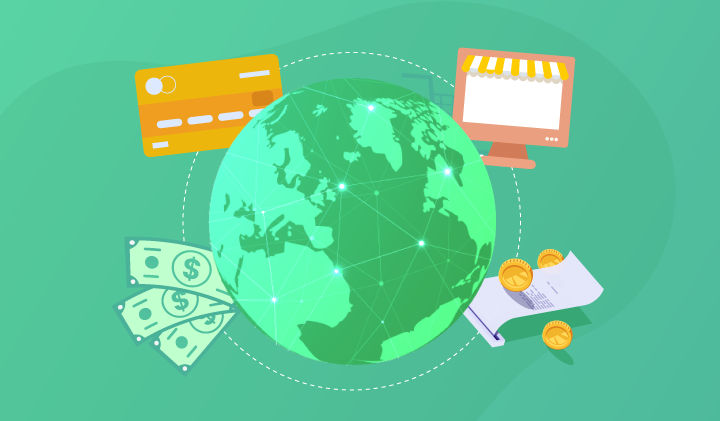One of the largest developments in decades is happening in the global payments business. The Society for Worldwide Interbank Financial Telecommunication (SWIFT) was the principal mechanism for banks to communicate communications to each other around the world for a long time. It was the foundation for transfers between countries. But the rise of stablecoins and the US Federal Reserve's FedNow rapid payments have brought in new stakeholders. Different systems, like FedNow, SWIFT, and stablecoins, satisfy different needs. But when you look at them all together, they all help transactions go more quickly, cost less, and be more open. People in business, investors, and government officials need to know that these systems are not the same.
Stablecoins: Blockchain-Based Cross-Border Money
Stablecoins are digital currencies that are tied to something like the US dollar or a basket of currencies to preserve their value over time. This quality makes stablecoins less volatile than cryptocurrencies like Bitcoin, which makes them excellent for payments and other money-related activities. By March 2025, the market value of stablecoins had increased to $200 billion, with USDC and USDT dominating more than 90% of the market.
Stablecoin payments are highly useful since they let you send money all over the world for very little money, and the money is usually cleared in a couple of seconds. Stablecoins run on blockchain networks, which means there are fewer middlemen than with regular bank payments. This is why they are great for sending money to people in other countries, making payments between businesses (B2B), and saving money in places where prices are going up.
Stablecoins can be algorithmic (their value is stabilised by adjusting the number of coins in circulation), fiat-collateralized (their value is backed by real-world reserves), or crypto-collateralized (their value is backed by digital assets). They effectively put the US dollar "on-chain" in a digital-first economy, which makes it easier to lend, trade, and send money.
SWIFT: The Legacy Network
In 1973, Belgium started SWIFT. It now links 11,500 institutions in over 200 nations. It allows banks a safe, standard means to send messages to settle payments instead of exchanging money directly. For a long time, SWIFT has been the most significant network for international payments.
However, SWIFT's dependence on correspondent banks makes things less efficient. Traditional SWIFT cross-border transfers can take anywhere from one to three business days, and occasionally even five, depending on the time zone, the holiday, and the bank in between. The cost is also bad. It includes fees for currency exchange, fees for middlemen, and transaction fees that can be between $10 and $50.
Even with these challenges, SWIFT's strongest strength is that regulators trust it, and it has a lot of users. It is still the finest network for high-value corporate dealings and interbank settlements when dependability and compliance are more important than speed and cost.
Also Read: What is Polygonscan Explained: Tracking Transactions on Polygon
FedNow: Fast Payments in the US
The U.S. Federal Reserve's debut of FedNow quick payments is a huge change in how individuals in the country pay for items. FedNow is different from standard railroads like Fedwire or ACH because it is open 24/7 and settles payments in seconds. This means that recipients can obtain their money right away.
This system is for transactions in U.S. dollars only. It can be used for small business transfers, paying bills, and making payments as an individual. By the first quarter of 2025, FedNow was in charge of more than 1,300 institutions and processed more than 1.3 million transactions every day, which added up to more than $540 million.
But there are limits on how many transactions you can do with FedNow. The maximum amount that can be transferred is $500,000, and it can only be utilised in the US. Businesses still have to utilise Fedwire, ACH, or SWIFT to transmit money to other countries or to pay other businesses a lot of money. The fact that it is available in real time and is easy to use at the store level is its true merit, not that it helps with international trade.
Comparing International Payment Networks: FedNow, Stablecoins, and SWIFT
It's easy to see how stablecoins are different from international payment networks like SWIFT and FedNow:
- Speed: SWIFT takes one to five days, FedNow settles payments instantly in the US, and stablecoins settle payments on blockchain networks in seconds.
- Cost: FedNow has minimal transaction costs based on how many transactions you do; however, SWIFT is still the most expensive option. On blockchains that perform well, transferring stablecoins only costs a few cents.
- Transparency: FedNow shows you real-time transaction data in the US, SWIFT makes it easy to know what's going on with gpi tracking, and stablecoins let you observe everything that happens on public ledgers.
- Cross-border reach: FedNow only operates in the US, whereas Stablecoins work everywhere, and SWIFT connects banks all over the world.
- Accessibility: To use FedNow, you need a U.S. bank account; to use SWIFT, you need institutional access; and to use stablecoins, you need a wallet.
The Market and Rules in Action
Regulators all across the world have reacted to the rapid rise of stablecoins. The European Union's Markets in Crypto-Assets (MiCA) regulation makes it clear what stablecoin issuers may and mayn't do. It puts a lot of importance on reserves, transparency, and oversight. There have also been suggestions or implementations of frameworks for stablecoins in Japan, Singapore, and Hong Kong. The rules in the US are still not clear, so it's challenging for both users and issuers to know what to do.
Central Bank Digital Currencies (CBDCs) are one of the payment methods that central banks throughout the world are looking into. In the future, these projects might operate alongside or against stablecoins that come from the private sector.
A few of the big companies that already accept stablecoin payments are Visa, PayPal, and Stripe. This means that general adoption is just a question of time.
Also Read: How Fintech Startups Can Build on Stablecoin Infrastructure
The Future of Global Payments
One rail won't control the flow of money in the future. Instead, it will be based on how well it works with other systems. SWIFT will presumably remain the dominant method for high-value payments between banks. FedNow will let customers and small businesses make payments immediately, which will bring US domestic settlement up to date. Stablecoins will be the finest way to send money around the world, which is inexpensive, clear, and has no boundaries, especially in underdeveloped nations.
In the future, FedNow and stablecoins will be the main ways to make payments between countries. People and businesses will utilise more than one train at once, depending on how simple it is to get to, how fast it is, and how much it costs.
TransFi for Payments on Multiple Rails
It's challenging for businesses to get around in this flawed system. It's not realistic to choose between stablecoins, FedNow, or SWIFT for every transaction. Multi-rail solutions like TransFi make this challenging issue easy by letting you connect to all the major tracks through one interface. TransFi has a cheap, legal option for your business, whether you need traditional SWIFT transfers, cross-border settlement with stablecoins, or rapid payments within the US.
Conclusion
The discussion over FedNow vs. stablecoins for rapid settlement and stablecoins vs. SWIFT for international payments reveals that each system has its own strengths and weaknesses. SWIFT is still the greatest way for institutions to send money because it works with the most people around the world and is the most reliable. Millions of families and companies may now settle payments in real time thanks to FedNow. This makes payments in the US considerably better. Stablecoins, on the other hand, are transforming international trade quickly by being faster, more open, and more accessible than any other money.
It's more vital to know how different systems will function together and help each other than to choose a winner for the future of global payment rail comparison. Interoperability's true strength is in selecting the appropriate rail for the specific application, whether for an individual or an organisation. The joining of these networks shows that the world's financial system is becoming increasingly computerised, accessible to everyone, and efficient.
FAQs:
1. Which is better for making payments all over the world: stablecoins or SWIFT?
For minor cross-border transactions, stablecoins are faster and cheaper, but SWIFT is more reliable for large-value institutional payments.
2. Can FedNow be used to make payments outside of the US instead of SWIFT?
No, you can't use FedNow to send money to other countries. It only works in the US.
3. What's the difference between payments made using FedNow and payments made with stablecoins?
Both allow for real-time settlement, although FedNow only works for transactions in the U.S. Stablecoins work for transactions all around the world.
4. Are stablecoins completely regulated, like FedNow or SWIFT?
Not at this time. Even if Singapore and the EU have set up guidelines, work is still being done on global stablecoin rules.
5. What will happen to payments between countries in the future? Will they be made with stablecoins, FedNow, or SWIFT?
There will be a lot of different things in the future. Stablecoins will be utilised for transactions between countries, FedNow for transactions within the U.S., and SWIFT for institutional trade.
Table of Contents
Suggested Article
Explore our products

Make global payments at the speed of a click

Accept payments, remove borders.

Unlock Seamless Digital Currency Transactions Anywhere








.png)














